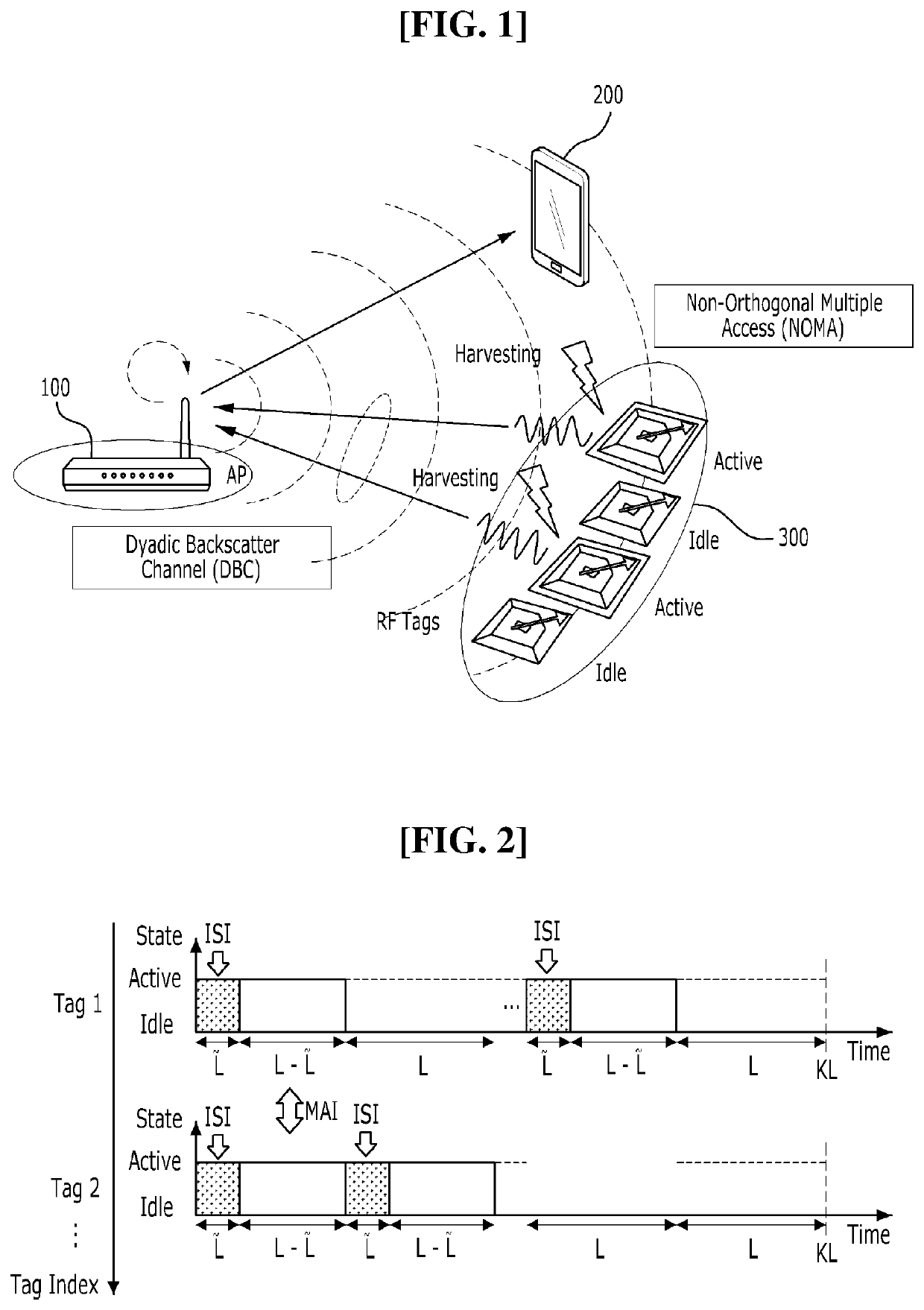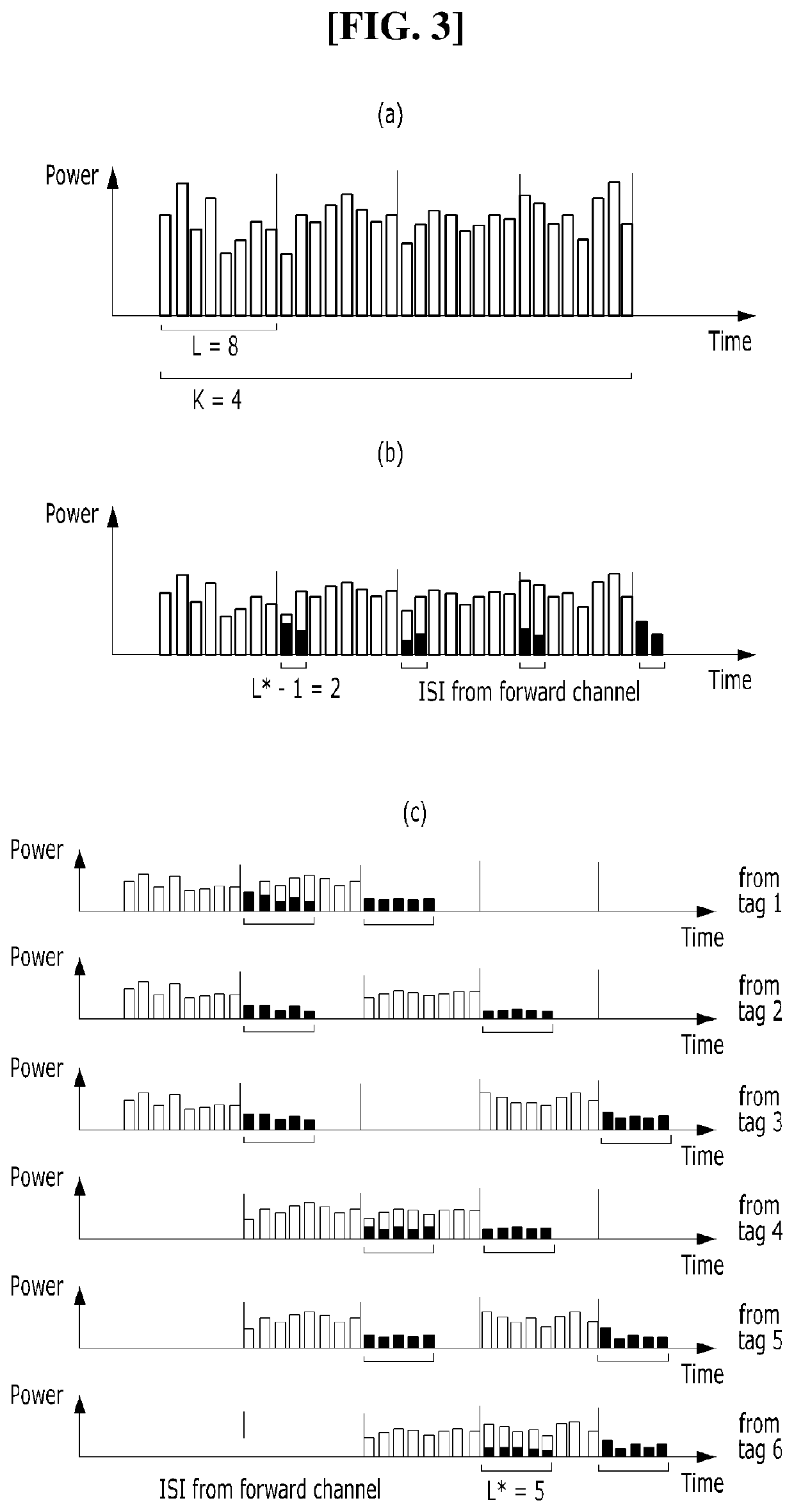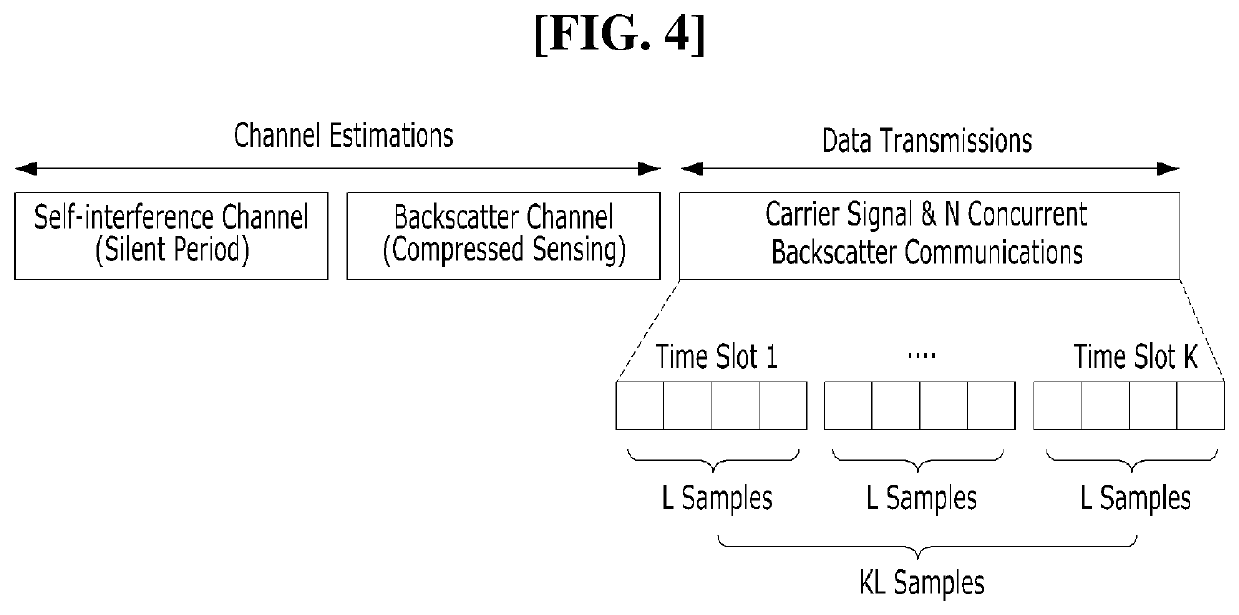Sparse-coded ambient backscatter communication method and system
a backscatter and communication method technology, applied in the field of sparse-coded ambient backscatter communication methods and systems, can solve the problems of increasing the size of the tag, not being able to support massive connectivity, increasing the implementation cost of the tag, etc., and achieve the effect of diversity gain, improving the energy harvesting efficiency and signal detecting performance of the sensor nod
- Summary
- Abstract
- Description
- Claims
- Application Information
AI Technical Summary
Benefits of technology
Problems solved by technology
Method used
Image
Examples
Embodiment Construction
[0051]Those skilled in the art may make various modifications to the present invention and the present invention may have various embodiments thereof, and thus specific embodiments will be illustrated in the drawings and described in detail in the detailed description. However it should be understood that the invention is not limited to the specific embodiments, but includes all changes, equivalents, or alternatives which are included in the spirit and technical scope of the present invention. In the description of respective drawings, similar reference numerals designate similar elements.
[0052]Terms such as first, second, A, or B may be used to describe various components but the components are not limited by the above terms. The above terms are used only to discriminate one component from the other component. For example, without departing from the scope of the present invention, a first component may be referred to as a second component, and similarly, a second component may be r...
PUM
 Login to View More
Login to View More Abstract
Description
Claims
Application Information
 Login to View More
Login to View More - R&D
- Intellectual Property
- Life Sciences
- Materials
- Tech Scout
- Unparalleled Data Quality
- Higher Quality Content
- 60% Fewer Hallucinations
Browse by: Latest US Patents, China's latest patents, Technical Efficacy Thesaurus, Application Domain, Technology Topic, Popular Technical Reports.
© 2025 PatSnap. All rights reserved.Legal|Privacy policy|Modern Slavery Act Transparency Statement|Sitemap|About US| Contact US: help@patsnap.com



